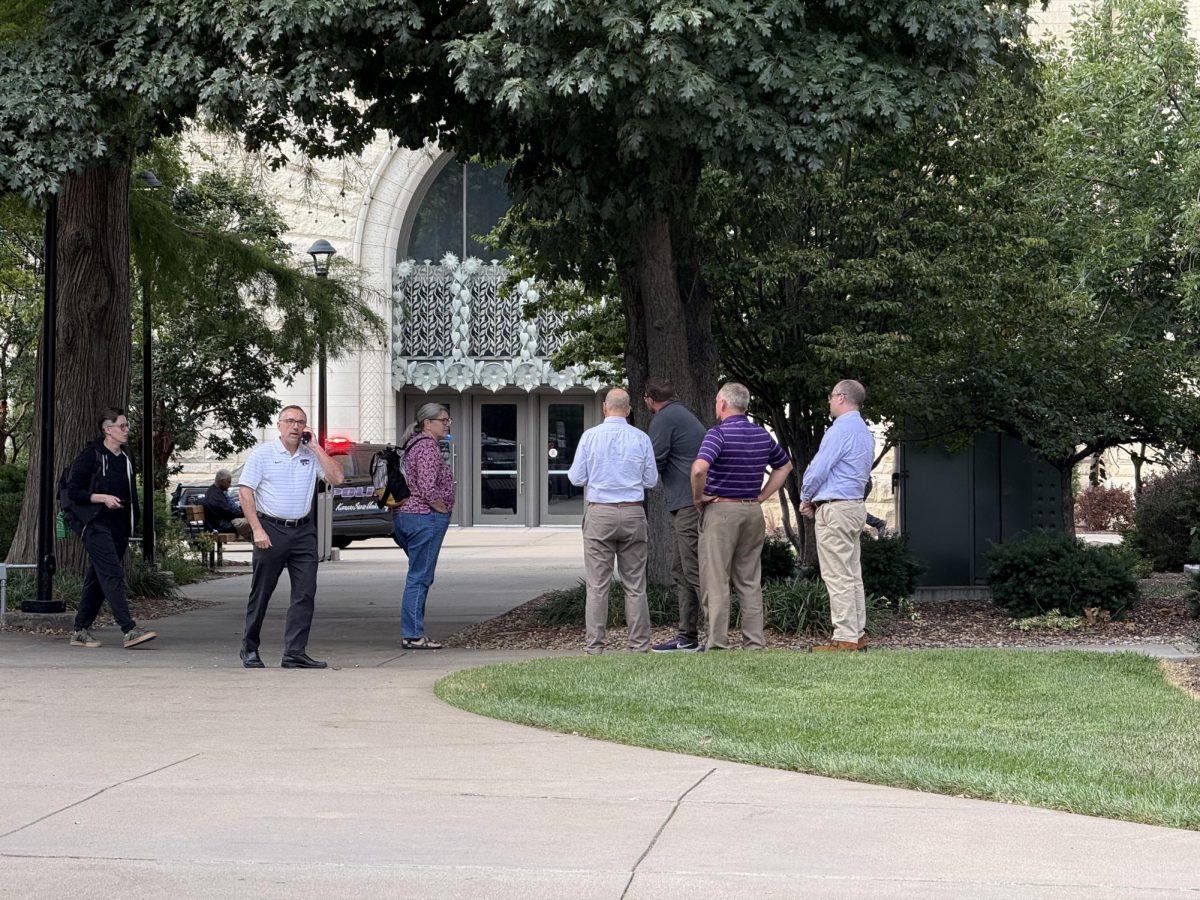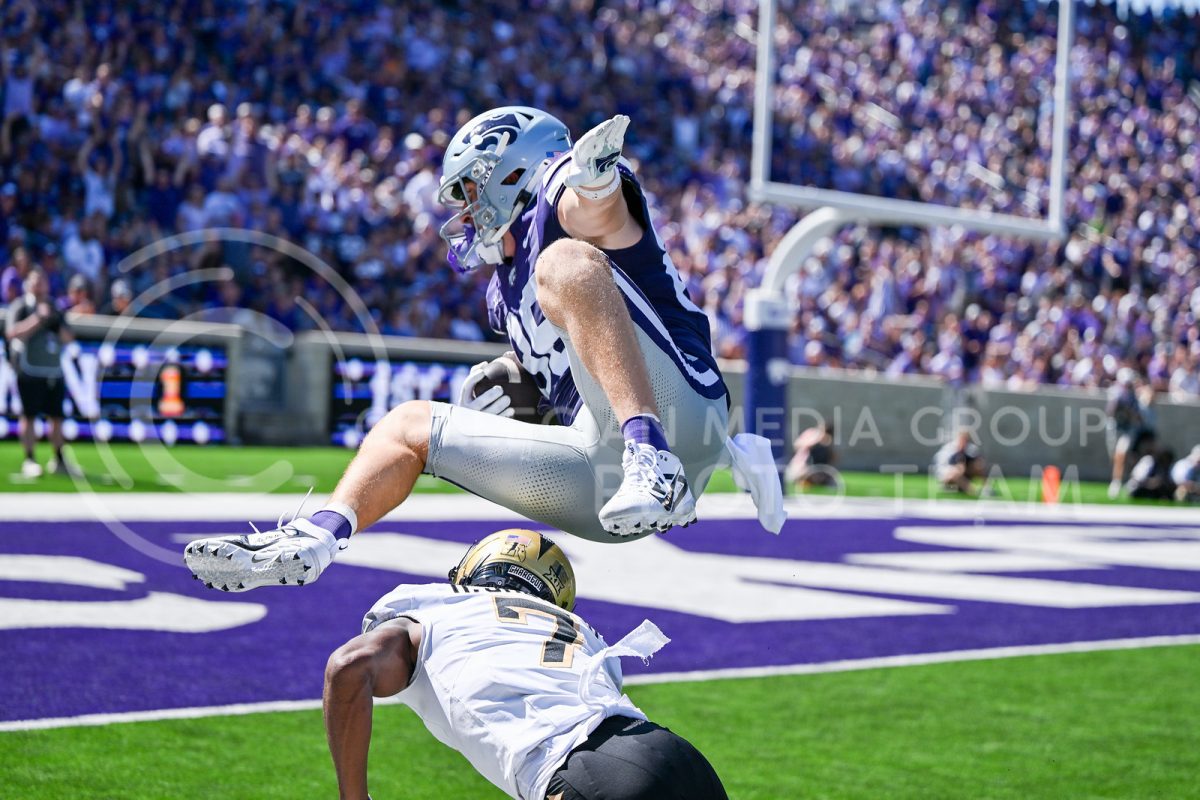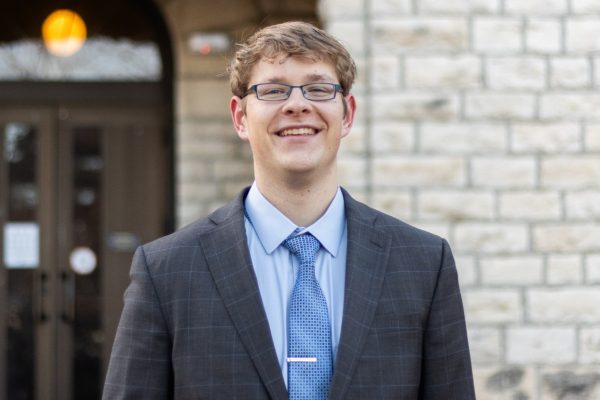Deconstruction of the west side of Ahearn Field House, which includes the natatorium and gymnasium, is well underway.
Kansas State had a backlog of maintenance approaching $500 million. Maintenance surrounding the west side attachments of Ahearn specifically contributed somewhere between $30-35 million toward that backlog.
Ethan Erickson, vice president of Administration and Finance, cited an underutilization of the facilities as part of the reason the university decided to take down the buildings.
“It will actually help the institution overall — we’ll have less utility cost, maintenance cost, just upkeep cost overall, which then should help us save some funds in the long term once we have those buildings down,” Erickson said.
Ahearn became a staple of K-State’s campus since its construction in 1950. In its heyday, it was a hub of excitement between basketball and volleyball games, track and field meets and cultural events such as Landon Lectures and concerts.
Judi Timken, K-State ‘73 alumna, said Ahearn was important to students.
“As an alum of Kansas State, Ahearn did mean a lot to both me and to people who were here when I was,” Timken said. “When I found out they were going to leave Ahearn, that was a big relief.”
One problem that presented itself was confusion among the community and alumni that thought the main portion of Ahearn would come down.
“I think initially it was a bit confusing, simply because those facilities are all attached,” Casey Lauer, associate vice president of Division of Facilities, said. “I understand the confusion for sure. Resoundingly, the field house will remain and will be a large focus of the visioning process through the campus master plan.”
Erickson said the construction is about 60% of the way finished, and the university partnered with the state to help fund the project.
After construction is complete, green space will take up the area where the natatorium and gymnasium once stood.
“Just think of a lawn,” Erickson said. “We’ll probably go back with some landscaping at some level, but really kind of just keeping it as an open space for the community.”
Erickson said the area’s use moving forward is up for discussion.
“I think they should ask people who have skin in the game, so to speak, about what they would think would be a good idea to do with that space,” Timken said. “Because, sometimes we forget about the sentimental value that things have for the alumni.”
Erickson said the university plans on conferring with “stakeholders, our community, our alumni, our students, our faculty and staff” on what the green space should look like moving forward, as well as the physical aspects of the campus master plan as a whole.






















































































































